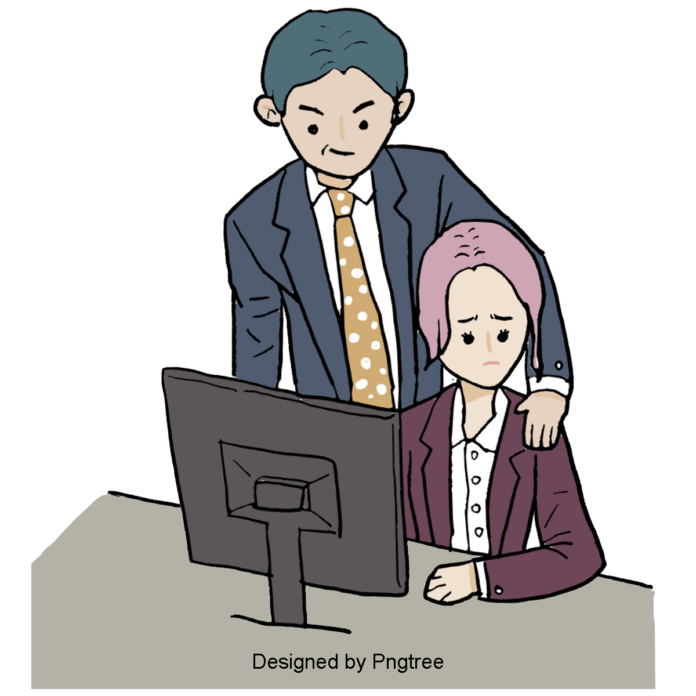If you want to read the solution click here
Peter Lewiston was terminated on July 15, 2008, by the governing board of the Pine Circle Unified School District (PCUSD) for violation of the district’s sexual harassment policy. Prior to Lewiston’s termination he was a senior maintenance employee with an above-average work record who had worked for the PCUSD for eleven years. He had been a widower since 2003 and was described by his coworkers as a friendly, outgoing, but lonely individual. Beverly Gilbury was a fifth-grade teacher working in the district’s Advanced Learning Program. She was twenty-eight years old and married and had worked for PCUSD for six years. At the time of the incidents, Lewiston and Gilbury both worked at the Simpson Elementary School, where their relationship was described as “cooperative.” The following sequence of events was reported separately by Lewiston and Gilbury during the district’s investigation of this sexual harassment case. Gilbury reported that her relationship with Lewiston began to change during the last month of the 2007–2008 school year. She believed that Lewiston was paying her more attention and that his behavior was “out of the ordinary” and “sometimes weird.”
He began spending more time in her classroom talking with the children and with her. At the time she did not say anything to Lewiston because “I didn’t want to hurt his feelings since he is a nice, lonely, older man.” However, on May 25, when Lewiston told Gilbury that he was “very fond” of her and that she had “very beautiful eyes,” she replied, “Remember, Peter, we’re just friends.” For the remainder of the school year, there was little contact between them; however, when they did see each other, Lewiston seemed “overly friendly” to her. June 7, 2008. On the first day of summer school, Gilbury returned to school to find a dozen roses and a card from Lewiston. The card read, “Please forgive me for thinking you could like me. I played the big fool. Yours always, P.L.” Later in the day Lewiston asked Gilbury to lunch. She replied, “It’s been a long time since anyone sent me roses, but I can’t go to lunch. We need to remain just friends.” Gilbury told another teacher that she was uncomfortable about receiving the roses and card and that Lewiston would not leave her alone. She expressed concern that Lewiston might get“more romantic” with her.
June 8, 2008. Gilbury arrived at school to find another card from Lewiston. Inside was a handwritten note that read, “I hope you can someday return my affections for you. I need you so much.” Later in the day, Lewiston again asked her to lunch, and she declined saying, “I’m a happily married woman.” At the close of the school day, when Gilbury went to her car, Lewiston suddenly appeared. He asked to explain himself but Gilbury became agitated and shouted, “I have to leave right now.” Lewiston reached inside the car, supposedly to pat her shoulder, but touched her head instead. She believed he meant to stroke her hair. He stated that he was only trying to calm her down. She drove away, very upset.
June 9, 2008. Gilbury received another card and a lengthy letter from Lewiston, stating that he was wrong in trying to develop a relationship with her and he hoped they could still remain friends. He wished her all happiness with her family and job. June 11, 2008. Gilbury obtained from the Western Justice Court an injunction prohibiting sexual harassment by Lewiston. Shortly thereafter Lewiston appealed the injunction. A notice was mailed to Gilbury giving the dates of the appeal hearing.
The notice stated in part, “If you fail to appear, the injunction may be vacated and the petition dismissed.” Gilbury failed to appear at the hearing, and the injunction was set aside. Additionally, on June 11 she had filed with the district’s EEOC officer a sexual harassment complaint against Lewiston. After the investigation, the district concluded that Lewiston’s actions created an “extremely sexually hostile” environmentfor Gilbury. The investigative report recommended dismissal based upon the grievous conduct of Lewiston and the initial injunction granted by the Justice Court.
Questions
1. Evaluate the conduct of Peter Lewiston against the EEOC’s definition of sexual harassment.
2. Should the intent or motive behind Lewiston’s conduct be considered when deciding sexual harassment activities? Explain.
3. If you were the district’s EEOC officer, what would you conclude? What disciplinary action, if any, would you take?
If you want to read the solution click here


